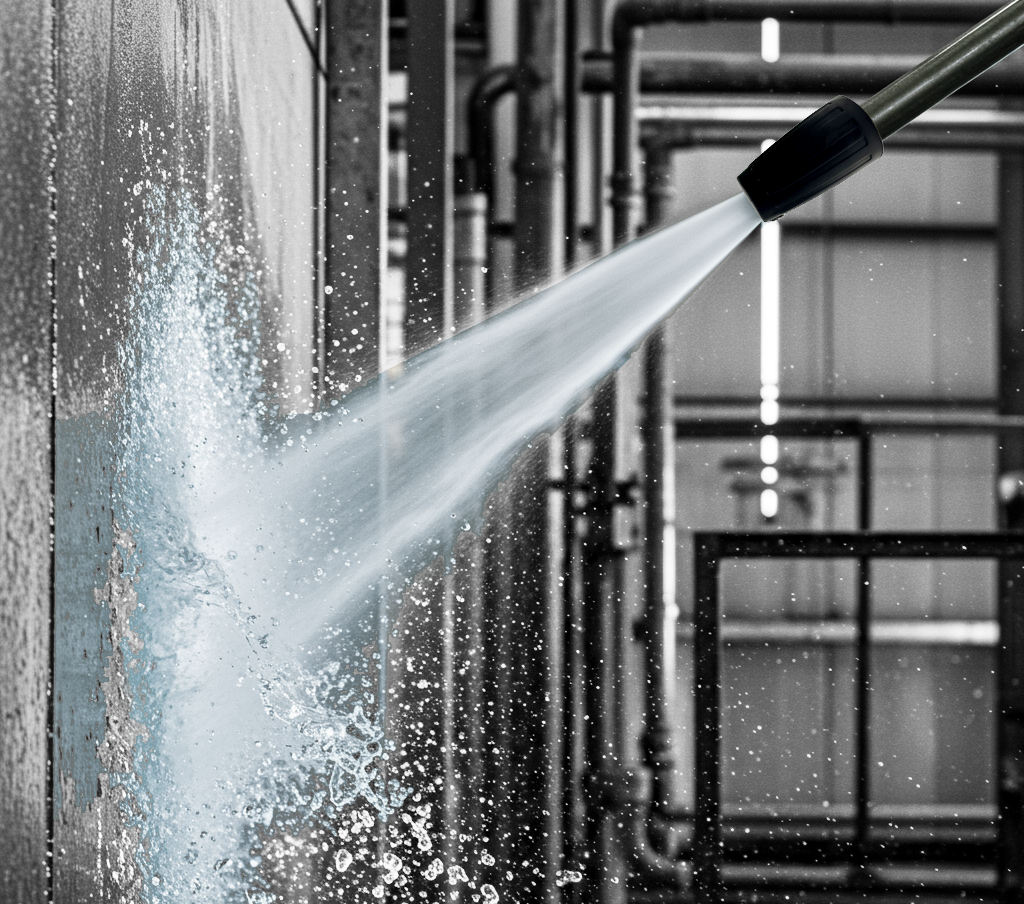
Industrial cleaning with high pressure
High-pressure water cleaning is the most effective technique for removing scale, paint, mineral residues
and stubborn grease from industrial equipment and surfaces. With pressures up to 2,500 bar, the water jet fragments contaminants without aggressive chemicals and minimizes downtime.

What is high-pressure cleaning?
Industrial high-pressure water (HPW) cleaning uses piston pumps to generate water jets exceeding 250 bar. At ultra-high pressures (UHP > 1700 bar), the water acts as a hydraulic scalpel, removing layers of rust, varnishes, and hard deposits without contaminating the substrate.
Hydrodynamic principle
The impact of the jet causes micro-fractures in the contaminant layer, and the tangential force drags away detached particles. The rapid expansion of the water upon impact generates shock waves that separate the dirt from the base surface.
Advantages for the industry
- Removes layers up to 10mm thick in a single pass
- Dust-free and abrasive-free process: reduces waste management cuts.
- Compatible with carbon steel, stainless steel, concrete, and composites.
- Ideal for maintaining exchangers, pipes, and large surfaces.
- Complies with environmental regulations by avoiding shot blasting and solvents.

High-pressure process
step by step
1
PREPARATION
Protection of sensitive areas and collection of effluents.
2
PARAMETER ADJUSTMENTS
Selection of nozzles, flow rate, and pressure according to contaminant.
3
PROJECTION
Controlled application with manual or robotic lance.
4
AND FILTERING
Recovery of water and solids for proper treatment.
Other industrial uses
- Paint and coating stripping on metal structures.
- Controlled demolition of concrete (hydrodemolition) without vibrations.
- Cleaning of tanks, reactors, and boilers using rotating heads.
- Removal of rubber and airport markings on asphalt pavements.
